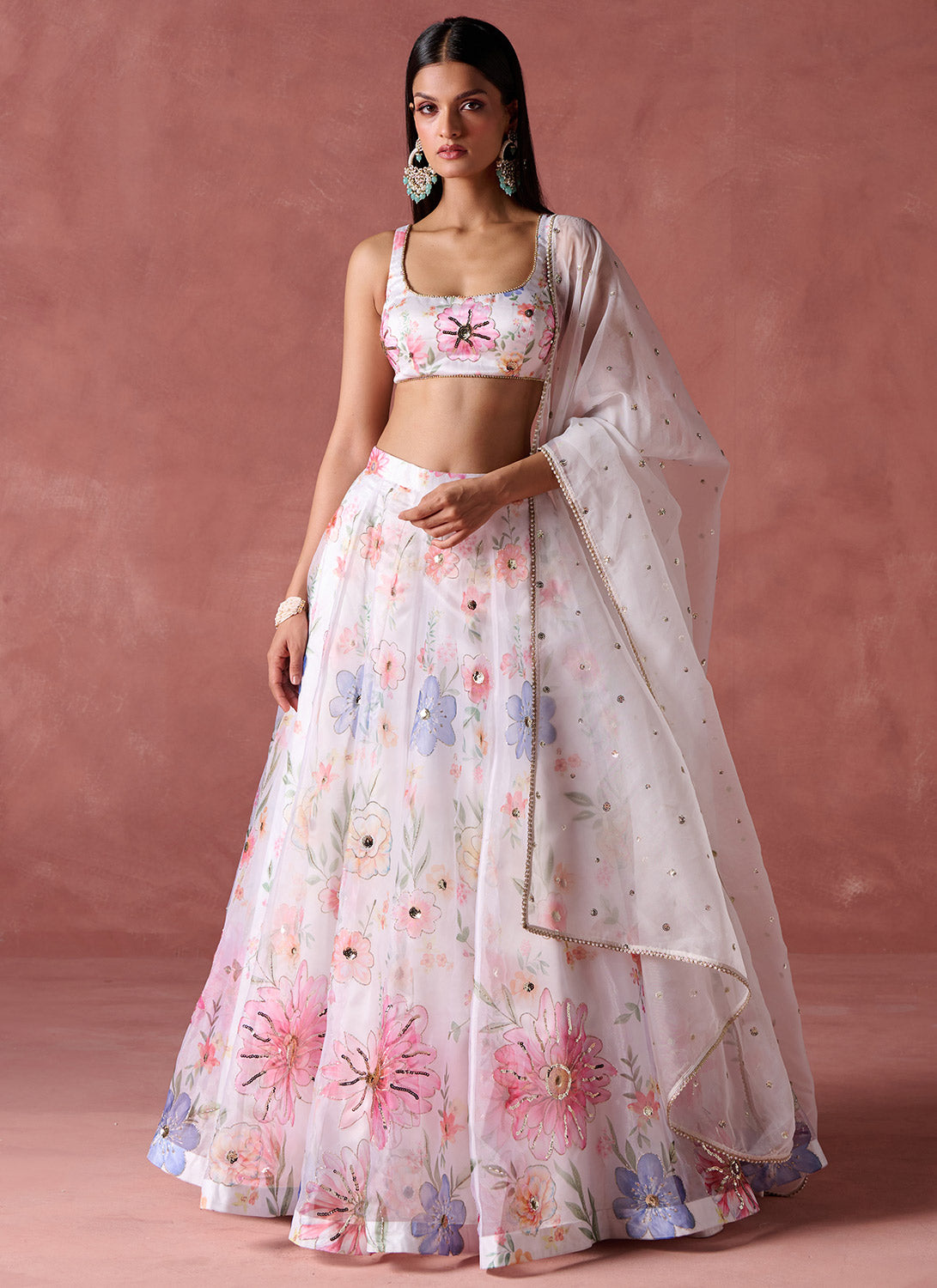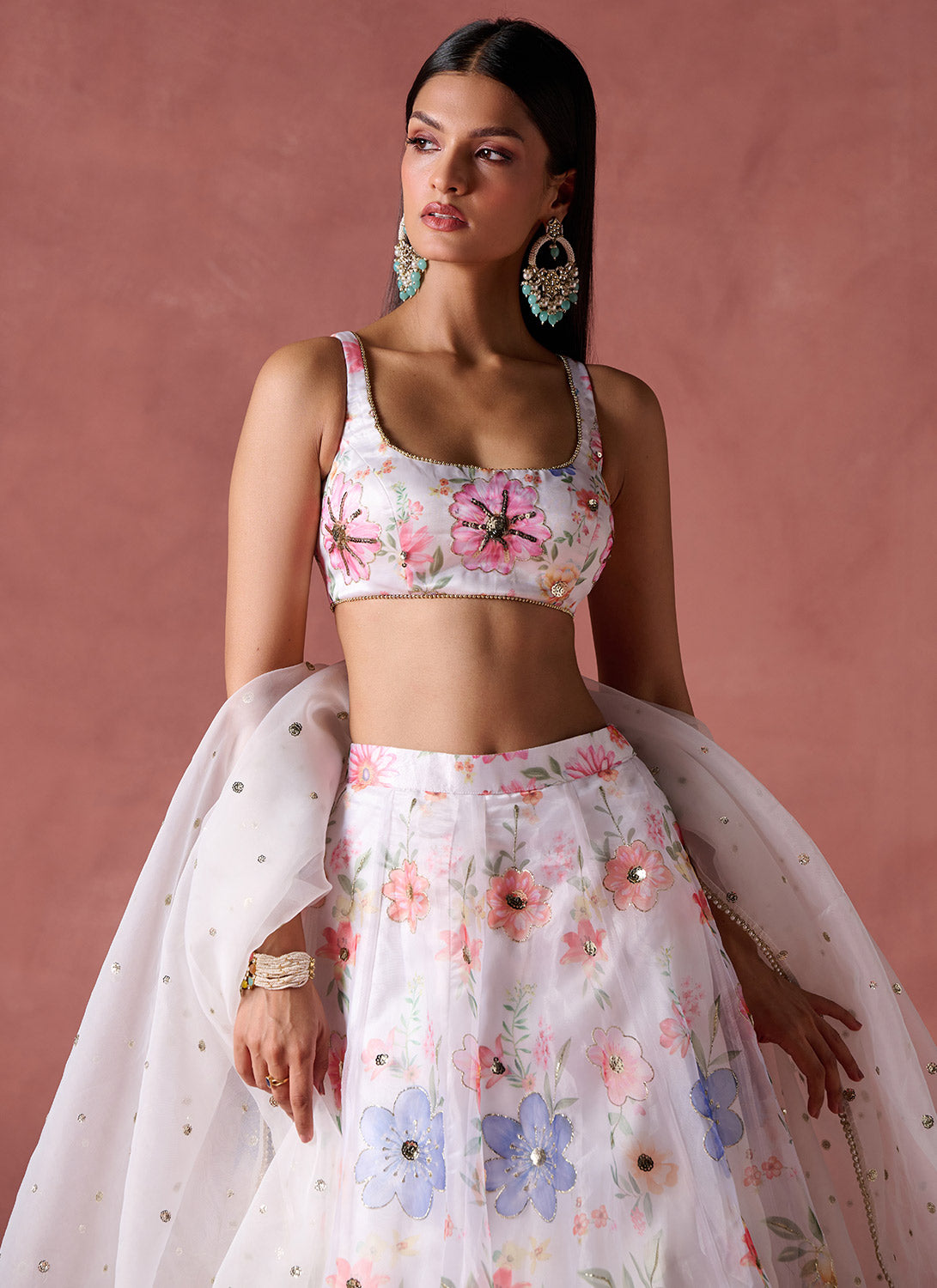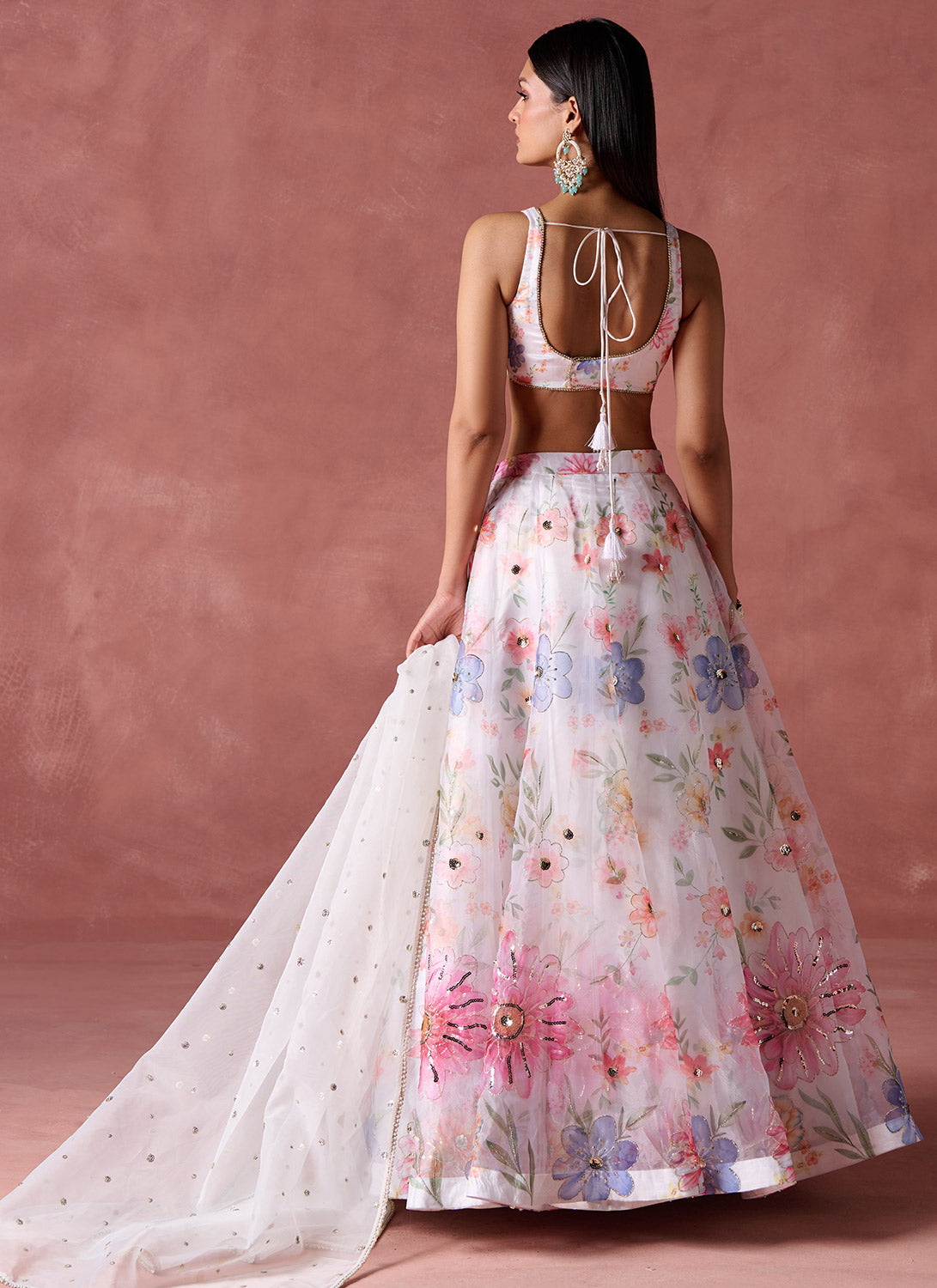Lehenga and ghagra fashion are two of the more popular forms of dress for women in India. These two styles can look very similar, even if you’re well-acquainted with traditional Indian dresses.
Because they look so alike, many people do not know that lehengas cholis and ghagras are two different garments. As experts in blending traditional Indian apparel with modern style, we’re here to break down the variations.
3 Differences Between Lehenga and Ghagra Styles
The differences between the lehenga and ghagra ensembles come down to coverage, fabrics, and occasions. Let's dive into each below!
1. Coverage
Ghagras typically offer more coverage. They’re usually paired with longer blouses or kurtis and can have a looser, more modest silhouette. Lehengas, on the other hand, are often styled with a shorter choli (blouse) that shows more of the midriff, especially in modern or bridal styles.
2. Embroidery & Fabric
In terms of embroidery and fabric, lehengas tend to lean heavily into luxury and ornamentation. They are often adorned with rich hand-embroidery, mirror work, sequins, zari work, and beading. The fabric choices range from silk and velvet to net and brocade, reflecting their status as formalwear designed for high-profile occasions like weddings, receptions, and grand festivals.
On the other hand, ghagras typically showcase a more grounded aesthetic. They are made from breathable, practical fabrics like cotton, khadi, or handloom silks, and while they can be decorated with embroidery or traditional prints, the detailing is usually more subtle. This simplicity speaks to their purpose: ease, mobility, and cultural continuity in everyday or regional celebrations.
3. Setting & Occasion
Ghagras are often worn in rural or traditional settings, during folk performances or everyday cultural occasions. Lehengas are more formal and are a go-to for weddings, festivals, and other grand celebrations. From brides to bridesmaids to guests, lehengas have a glam factor that makes them perfect for the spotlight.
With these distinctions in mind, it becomes clear that while both the ghagra and the lehenga are beautiful expressions of Indian tradition, they serve different purposes and represent different facets of cultural heritage. One speaks of comfort, community, and continuity; the other of celebration, reinvention, and splendor. Together, they embody the rich spectrum of Indian fashion.
What Is a Ghagra?
A ghagra is a traditional Indian skirt that is typically flared, full-length, and high-waisted. It is most often worn with a longer blouse or kurti and paired with a dupatta or odhani — a draped scarf that adds both elegance and modesty to the look.
Rooted in the rich heritage of Rajasthani and Gujarati culture, the ghagra is a staple in many rural and folk traditions. Historically, it has been a part of daily wear for women in these regions, made from breathable fabrics like cotton or mulmul, adorned with block prints, bandhani (tie-dye), or gotta-patti work.
Ghagras are particularly known for their ease of movement, making them ideal for folk dances such as Garba, Ghoomar, and Kalbelia, where swirling skirts add to the visual rhythm of the performance.
Today, the ghagra remains a beloved choice for festivals, fairs, and cultural events, especially in North and West India. Modern adaptations often blend comfort with style — think mirror work, colorful borders, and even Indo-western kurti pairings — keeping the ghagra relevant in both traditional and contemporary wardrobes.
Whether dressed up or worn casually, the ghagra is a celebration of regional craftsmanship, femininity, and timeless Indian elegance.
What Is a Lehenga?
The lehenga is similar to the ghagra, but there are a few important differences between the two.
Unlike the ghagra choli, the lehenga style is a 3-piece ensemble that includes a shorter blouse that exposes more of the midriff. You’ll also find a wider variety of fabrics used to make the lehenga choli (blouse). That’s because this type of traditional Indian outfit can be worn for many different occasions.
Lehenga cholis are also often paired with a dupatta, a type of shawl that can be wrapped or pinned as a stylish accessory. The dupatta can elevate your outfit by adding a pop of color or an eye-catching pattern to the mix.
The lehengas, cholis, and dupattas that you would wear together also tend to be made with elaborate embroidery patterns. Stonework, zari, and beautiful threading are all common for this type of apparel.
It should come as no surprise that lehengas exist for the most formal of occasions. You might see lehengas worn at weddings by guests — or even the bride — and for festival or party attire.
Lehenga & Ghagra Styles & Examples
With the difference between the two styles explored, let’s look at some specific outfits. This will help highlight what makes lehengas unique and showcase why they have the staying power they do.
This season, it’s all about rich tones, regal textures, and embroidery that does the talking. From golden elegance to jewel-toned drama, these lehengas are stealing the spotlight—and for good reason.
Style 1. Royal Blue Embroidered Brocade Lehenga

Royal blue is a perennial favorite—and when paired with rich brocade and detailed embroidery, it becomes a true showstopper. The Royal Blue Embroidered Brocade Lehenga is bold yet rooted in classic design, making it ideal for nighttime events, festive celebrations, or a grand reception look. Gold or antique silver accessories will elevate its regal vibes to the next level.
Style 2. Nude & Gold Embroidered Lehenga

Nude & Gold Embroidered Lehenga is for the modern minimalist who still loves a little shimmer. With intricate gold embroidery woven onto a soft, neutral base, this lehenga balances sophistication and sparkle like no other. It’s the ultimate pick for daytime weddings, sangeet soirées, or even that elegant engagement look. Pair it with champagne-toned jewels for a truly radiant finish.
Style 3. Dark Green Embroidered Lehenga

The Dark Green Embroidered Lehenga on the other hand is the unexpected hero this season. It’s luxurious, grounded, and effortlessly festive. The intricate embroidery on this lehenga adds texture and opulence, making it perfect for mehendi functions, winter weddings, or Diwali parties. Style it with kundan or emerald jewelry for a rich, royal finish.
Style 4. Lavender Embroidered Net Lehenga

A different type of flower and another embroidery technique define the next dress on this list. The Lavender Embroidered Net Lehenga is an elegant approach to party attire that's bright and blooming.
The net blouse and santoon inner create a two-toned neckline. The sheer neckline is also accentuated by floral threadwork, which you’ll see throughout the entire outfit. That rich, luxurious lavender color makes you want to find an occasion special enough to wear this lehenga.
The lehenga itself is made from organza with a santoon inner to create a sunlight-catching drape. Zari, threads, sequins, and stonework all come together to create a lavender garden of a dress.
Style 5. Emerald Green Sequins Embroidered Lehenga

A lehenga separates itself from a ghagra with its glamorous style. This is best showcased by our Emerald Green Sequins Embroidered Lehenga.
Sparkling sequins on both the choli and the lehenga make you think of a deep evergreen forest. The sequins vary in size to give the whole piece a mesmerizing textured look.
The net dupatta included in this outfit features similar sequin work on the hem and adds an ethereal quality to the look. The end result is an outfit with depth, allure, originality, and endless style.
All the pieces on this list are made in India and checked by hand. This allows Lashkaraa to craft high-quality traditional Indian clothing.
Find Your Fit: What's Your
Lehenga and ghagra fashion both have their place. Ghagra style is more modest, ideal for conservative occasions and everyday apparel. However, your lehenga is what you want to wear to a wedding, a party, a festival, or any other very special occasion.
Whether they’re holidays, weddings, festivals, or anniversaries, there are always big moments around the corner. With Lashkaraa, you can easily find the perfect new addition to your wardrobe for the days you’ll never forget.
Sources:
Gota Patti Origin | Pernia's Pop-Up Shop










